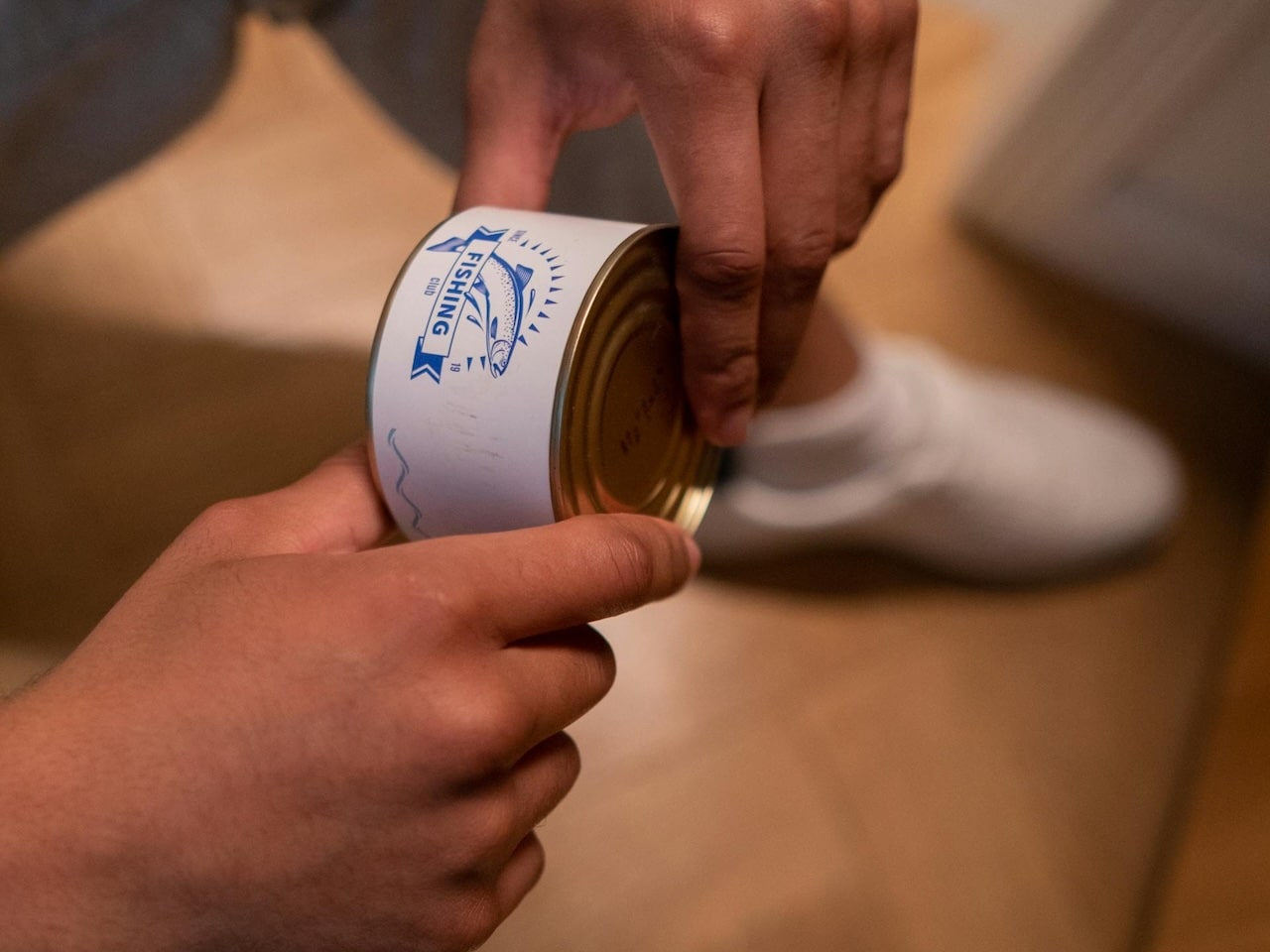
Canned tuna is one of the most versatile foods that exist. Easily prepare a first course (with pasta and tomato sauce) or a second (in French omelette), citing two very common examples. Now, despite being a ‘pantry bottom’ food in many homes, there are doubts about how many calories a can of tuna has or how much protein a can of tuna has.
Canned tuna and northern albacore are not the same
The terms tuna and northern bonito are often used as if they were synonyms and they are not. Eduard Baladia, dietician-nutritionist and member of the Scientific Evidence Analysis Center of the Spanish Academy of Nutrition and Dietetics, warns that “both belong to the tuna family, but they are not the same fish. The term tuna covers several species of large fish of the family Thunnus which can vary in flavor, texture and price. he nice of the north refers specifically to Thunnus alalunga”.
For canned tuna, the canning industry has its favorites. “The whitest species of tuna are usually used, such as the northern bonito (Thunnus alalunga) and yellowfin tuna (Thunnus albacares),” explains Baladia.
Nutrients in canned tuna: proteins and fats
Although canned tuna is so often used for its good marriage with any other ingredient, it also has an interesting nutrient content. In fact, it is an excellent source of protein and “a fatty fish that provides omega-3 polyunsaturated fatty acids, known for their health benefits.”
The amount of fat contained in a can of tuna varies “depending on the specific subspecies and the liquid used in canning, water or oil. This fat content can range between 2% in certain subspecies in their natural state and 12% in some varieties canned in oil.”
How many calories?[i] Do you have a can of tuna?
The energy contribution depends, first of all, on the weight of the can, since they range from 65 grams to several kilos of content. But it also depends on whether it is natural tuna or in oil. “The variations can be significant, ranging from approximately 100 kilocalories per 100 grams in the natural version, to around 200 kilocalories per 100 grams in tuna in drained oil,” says Baladia.

How much protein is equivalent to a can of tuna?
There is a certain unfounded obsession with meeting the protein requirements in each intake, something that, in general, the Spanish population more than meets and without the need to obsess over counting proteins. In fact, there is no need to put canned tuna in the salad if you have meat or eggs as a main dish. And vice versa: if you put a generous amount of tuna in the salad, it can become an easy, complete and healthy single dish.
“The amount of protein in canned tuna will be subject to the specific subspecies contained, with variations that can range between 20 and 30 grams per 100 grams of tuna. In all cases we will be talking about a considerable protein contribution,” highlights the dietician-nutritionist. In an 80 gram can we can have almost 20 grams of protein, similar to a small fillet of 80 to 100 grams of fish.
Does canned tuna make you fat?
Answering this question is not easy, since it depends on the energy intake based on the eating pattern and the daily energy expenditure according to the level of physical activity. As a summary “it can be stated that its consumption It can be a healthy and compatible choice even in weight loss programs or diets.”.
That said, it can be added that “the choice of the type of canned tuna, whether in water or oil, can also influence the total amount of calories ingested.” The suitability of canned tuna consumption to a weight loss program will depend on the specific need for calorie restriction and this must be determined by a dietitian-nutritionist on an individual basis for each patient.

Nutritional differences in canning: natural, pickled, olive or sunflower oil
The main factor that must be taken into account when deciding which canned tuna to choose lies in the fat content and typewhich is determined by whether it is canned naturally, pickled, or in olive/sunflower oil.
- Natural tuna: It generally has lower fat content than oil varieties. Being an excellent source of lean protein, it provides fewer calories.
- Marinated tuna: It may have a higher fat content than natural, but less than oil. The B side is that it often lends itself to dipping bread in the sauce and that can modify the total nutritional contribution of the dish. The amount of oil will vary depending on the brand and specific recipe.
- Tuna in olive/sunflower oil: It usually has a higher fat and calorie content, although it also influences whether it is consumed drained or all the oil included in the preparation is used. When it comes to the type of fatty acids, whether olive or sunflower oil, science suggests that both oils (unsaturated) are healthy options.
It should be noted that currently you can find varieties of the three types with a reduced salt content. This aspect is a point to take into account with cans of tuna. Salt consumption in Spain is almost double that recommended by the World Health Organization, and although the first food sources are bread and sausages, preserved foods can be a source to limit, especially in people who must control . your blood pressure. For this reason, low-salt cans will be a preferential adoption for these cases.
Benefits of having canned tuna in our pantry
There are three main reasons given by Eduard Baladia for recommending having canned tuna in the pantry:
- Comfort and durability. Canned tuna, which does not require refrigeration, is convenient and durable, as well as easy to store.
- Versatility in the kitchen. It works well in a wide variety of recipes, from salads and sandwiches to more elaborate dishes such as tuna cakes, pasta or homemade sushi.
- Economical option. It is often a cheaper option compared to other protein sources.
Is it good to eat canned tuna every day?
“From a nutritional point of view, it is plausible to affirm that good health could be maintained by including canned tuna in the daily eating pattern. However, I have some doubts about the safety of doing so. Exposure to mercury and its impact on health can vary depending on the general dietary pattern and population groups,” says Baladia.
In this sense, the expert points out that a study carried out by the AESAN in 2013 It was revealed that the mercury content in tuna cans is significantly below the maximum permitted limits. Although it is not worrying, Baladia suggests the moderation of your consumption.
Specifically, “in specific groups such as pregnant women and children under 10 years of age, it is suggested to avoid fish with high mercury content, including tuna, whether canned or not. For children between 10 and 14 years old, the recommendation is not to exceed 120 grams per month,” says Baladia.
Is canned tuna bad for cholesterol?
In general, this food “is not considered harmful to cholesterol. “It can, in fact, be part of a healthy diet in people with high cholesterol.” In fact, fatty fish, such as tuna, “contain healthy fats and can help protect against the negative consequences of excess blood cholesterol,” concludes the expert.
[i] The exact term would be kilocalories (1,000 calories). However, in street language the use of the term ‘calories’ has been erroneously popularized when, in reality, it should be said ‘kilocalories’. The use of ‘calories’ in this title, although incorrect from a scientific point of view, is linked to that language common to citizens.

Eduard Baladia. Coordinator of the Scientific Knowledge Management Area and the Center for Analysis of Scientific Evidence of the Spanish Academy of Nutrition and Dietetics. Director of the Evidence-Based Nutrition Network (RED-NuBE) and Associate Professor in the Department of Experimental and Methodological Sciences of the University of Vic. Instagram @ebaladia. Twitter: @EBaladia. Facebook: @ebaladia







